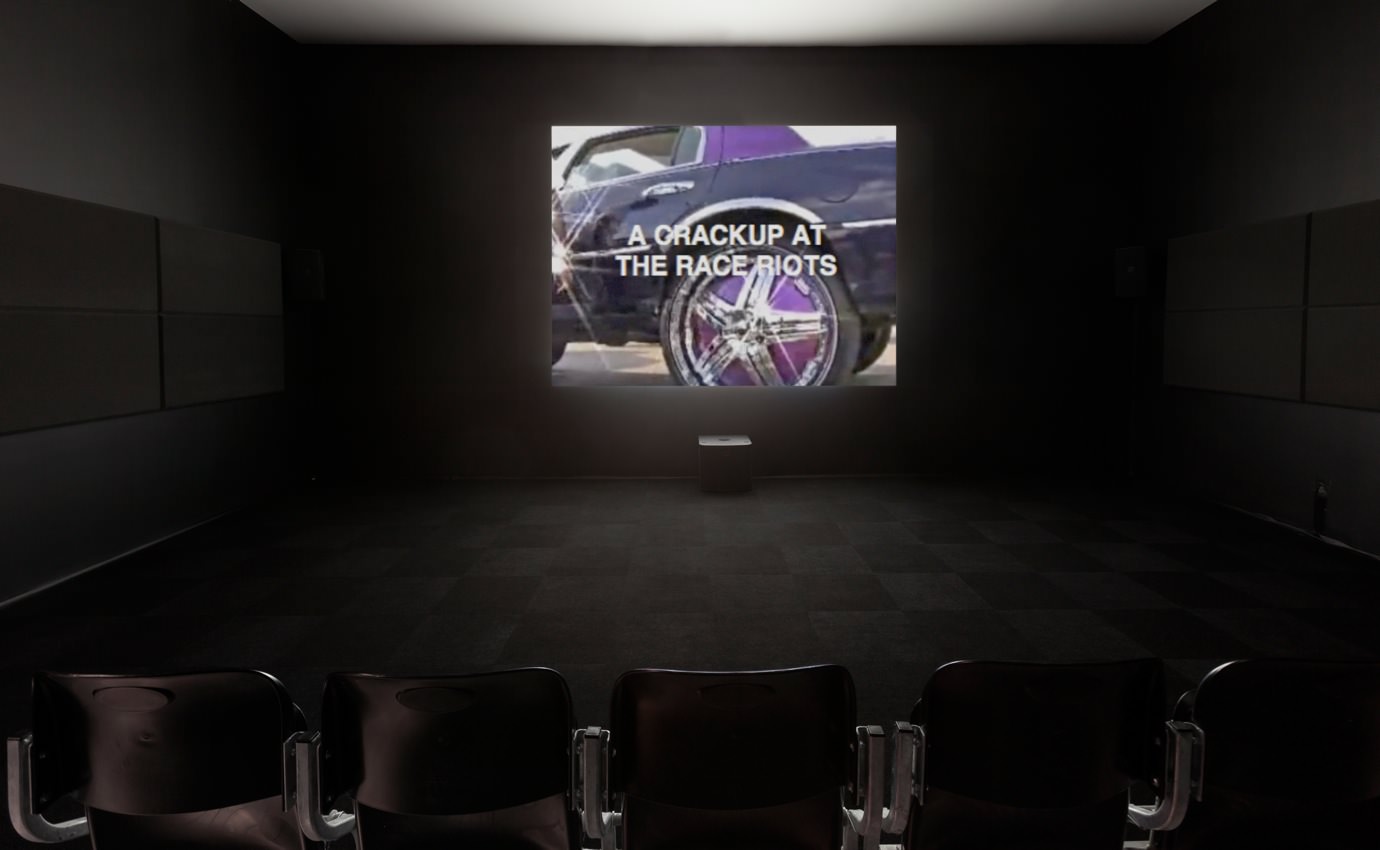Belgian artist collective Leo Gabin is set to premier a new video installation at Elizabeth Dee Gallery in New York tonight. For their latest project, the trio, which is comprised of Lieven Deconinck, Gaëtan Begerem, and Robin De Vooght, found inspiration in Harmony Korine’s 1998 novel A Crackup At The Race Riots. Whitewall spoke with the artists about this new development in their work, the contemporary significance of Korine’s book and their ensuing interpretation.
WHITEWALL: If we’re not mistaken, this is the longest video work you’ve made. Did having the book as an inspirational foundation affect the length? Were there new considerations that came up in making a longer video?

Courtesy of Elizabeth Dee Gallery
LEO GABIN: We indeed have only made short videos so far, always around three to four minutes, mostly with a one-song soundtrack like music videos. Using the book as inspiration definitely urged us to make a longer piece. Even though the book is very untraditional, we wanted to approach it like a classic novel to screen adaptation, which would ultimately translate to a longer video work, a feature film.
WW: It’s also a more serious topic than your other video work. For instance, Tumblr and With Me are quite humorous, whereas this project promises images of decay and poverty left in the wake of the recession. So, what inspired that shift?
LG: Yeah the film is more sinister than our other videos, the humor is subtler, but is present throughout the film. Like the novel, we think it contains sad, absurd, offensive, funny and dark parts. Harmony mentioned the story takes place in Florida, which immediately made us think about the sunshine state after being hit hard by the 2007 real estate crash and later the economical collapse. This highlighting of the poverty and decay, we felt was fitting with the general mood of the book.
WW: The title also seems particularly pertinent tody, even though Korine’s novel was written in 1998.
LG: We already had the idea to make the film in 2011 and most of it was finished [before now]. Through social media and the Internet, you are confronted with the fact that there still is a lot of racial tension, so it already seemed very relevant to make the film and include this. For example, with the reference to Al Jolson in the novel, we directly thought about the video of the college girls who posted a racial rant in blackface online. Knowing the book was written in the 90s, the “race riots” most likely refers to the LA riots, but recent events are giving a new spin on the title making it unintentionally very pertinent again. But themes from the book like teen obsession, celebrity, race, death, religion, are all still applicable today.
WW: It’s mentioned that Korine’s book is reminiscent of Dadaist fiction. Dada was also the birth of collage, a medium you work in quite often, and your interpretation uses all found footage from the Internet. Would you consider this project a form of modern, internet-age collage in its own way?
LG: That’s a good description. When we read the book for the first time, we immediately thought that the way this book is put together, the collage element would work perfectly with our approach to video and our work in general. Lacking traditional structure and linear narrative, one might think it’s the most non-filmable novel ever, but for us it really worked as a perfect script to make our first long video.
WW: In terms of the audio for the video, what is the significance of using text-to-speech software? What was your process for the score?
LG: Using the computer to translate the text to audio files, which we could use in the film fits in the collage spirit. We like the idea of the whole film being composed from manipulated elements all in connection with the computer. The strangeness of the semi human sounding text-to-speech voices also adds to translate the absurdness of the novel to the screen. The music and sound are a big aspect of the film and all audio used is either pop music we remixed or altered in some way to fit the scene. Or they are sounds and music we made ourselves using computer programs. Also two songs made by Harmony are included.
“A Crackup at the Race Riots” is on view through March 28 at Elizabeth Dee Gallery in New York.








